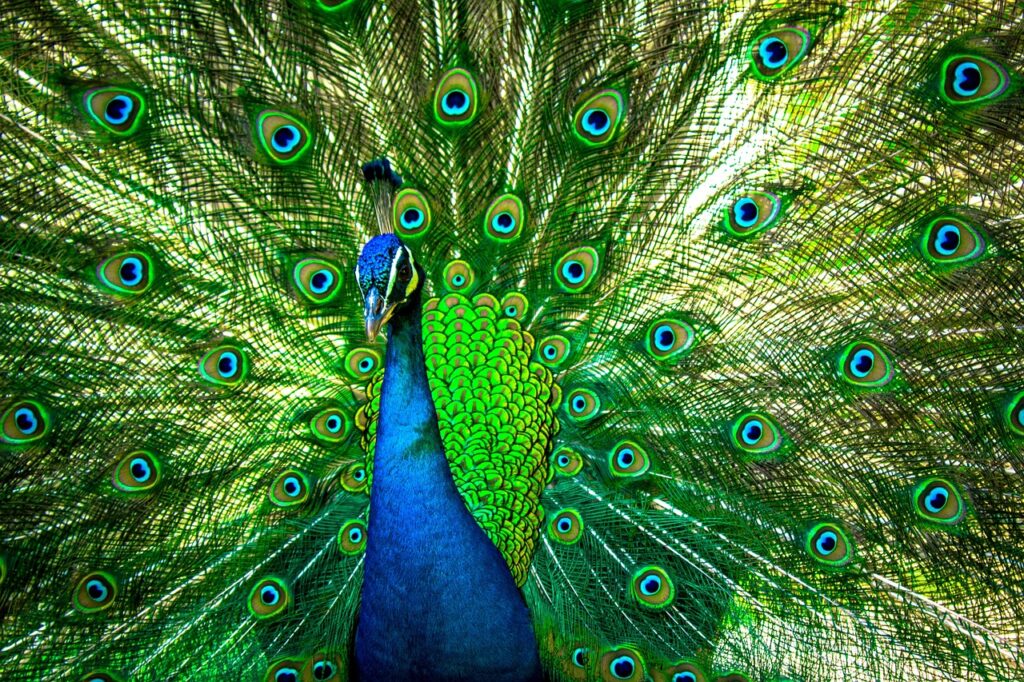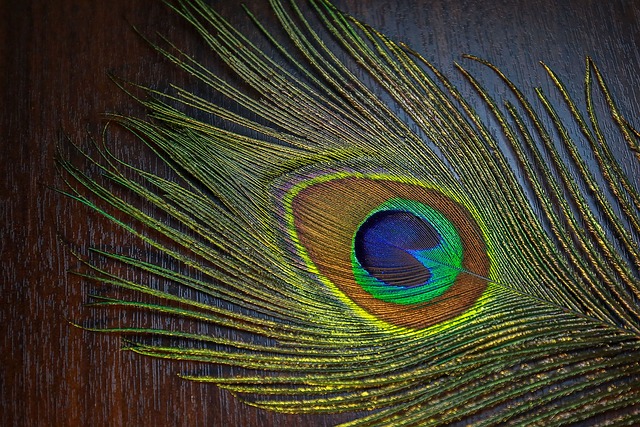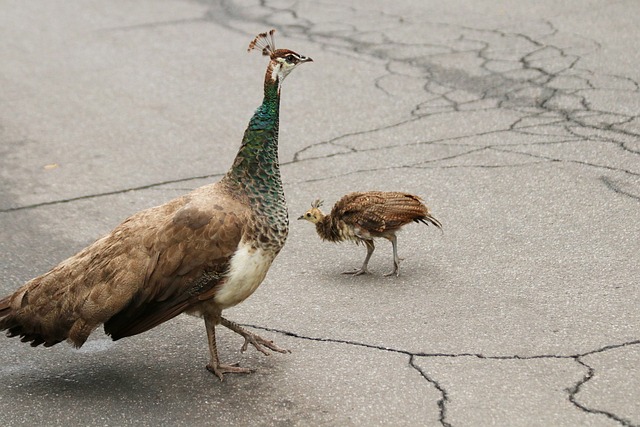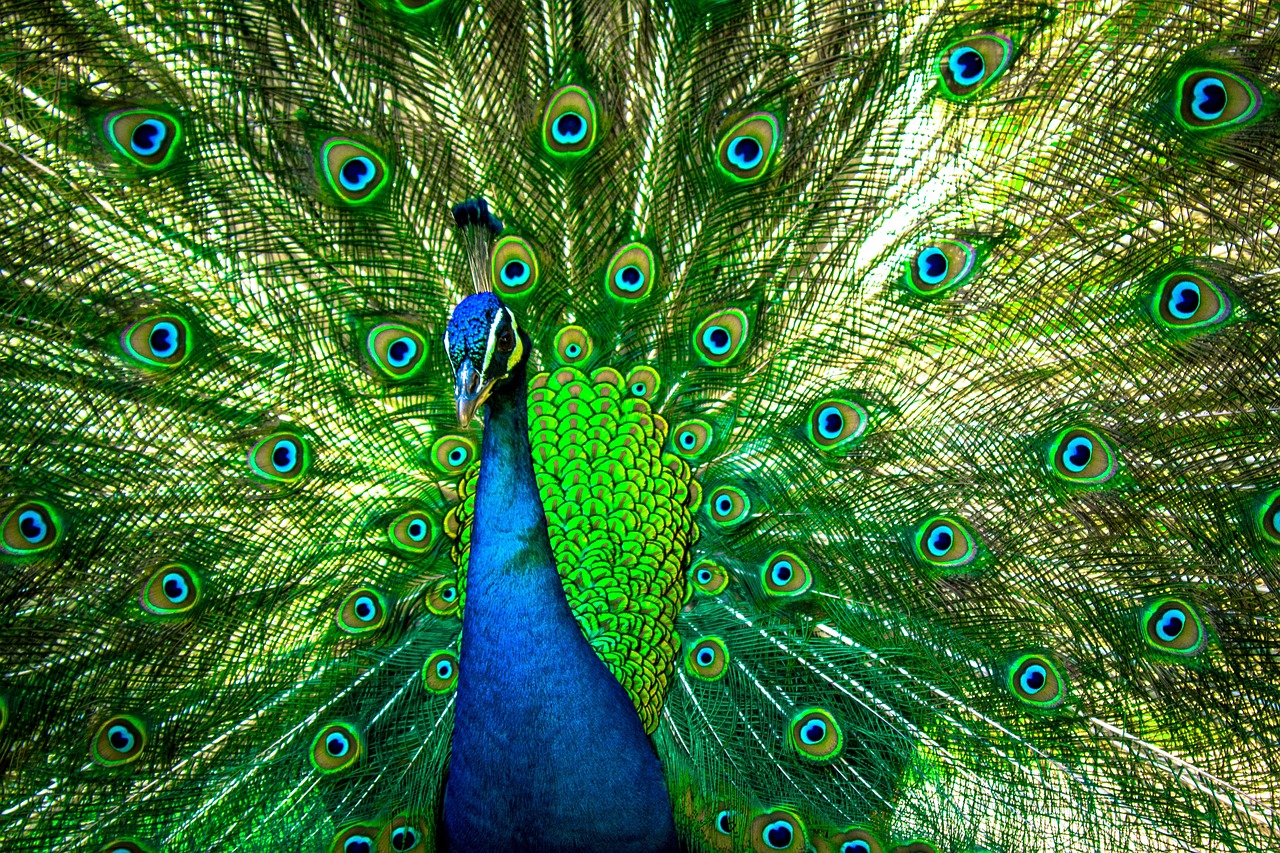The vibrant colours of a peacock feathers and its elegant dance in the rain are a treat to watch. If you have ever wondered the reason behind the dance, read this article till the end.
In a previous post, you saw the most romantic creature of the aquatic world, the sea horses. Their brilliant dance in attracting a mate was fascinating to watch. They are not the only romantic creatures (apart from humans!).
Let’s dive deep into the world of peafowls and witness their vibrant plumage, intricate courtship displays, and fascinating social behaviours that make them truly captivating creatures in the avian kingdom.
Courtship dance and more
The courtship dance of peacocks are no wonder one of their captivating features, but they are beyond that. Peacocks are a fascinating group of birds. Their significance extends into ecological, social and cultural dimensions, making them a versatile creature in the avian world. Let’s look at them in detail.
Males, Females and Baby peacocks: what are they called?

A group or family of peacocks (including male, female and baby): Peafowl
Males: Peacocks
Females: Peahens
Baby: Peachick
The three species of peacocks
There are mainly three species of peacock:
- Indian peafowl with iridescent blue necks and a huge train of feathers. They are often seen in India and Sri Lanka
- Green peafowl with emerald green feathers and long trains. They come under the endangered species list of IUCN. They fall into three subspecies
- Java peafowl
- Indo-chinese peafowl
- Burmese peafowl
- Congo peafowl belonging to Africa. They are labelled vulnerable under the IUCN.They are bronze green in colour and have a characteristic red throat
Colourful Choreography: Understanding the Steps in Mate Attraction

As seen before, the main purpose of the dance is to attract a mate. Once the male peacock senses a female peahen around, it starts to spread its feathers to an angle of 45° to the right of the sun so the sunlight enhances the iridescence of the feathers and fans them. It then shakes and rattles the feather to attract a mate. While the peacock is performing his dance, the female peahen stops directly in front of the peacock so that it can assess its feathers from a 90 ° angle. Not just the tail, but, it also has some leg work to do. They go around in small and neat circles. If this elaborate choreography impresses the peahen, it mates with the peacock. They shed their feathers after the mating season. This happens naturally in a process called molting.
Intricate Moves: Decoding the Language of Peacock Romance

The feather movements during the peacock dance produce a low frequency sound, which helps it attract its mate. It is a loud and piercing sound which the peacock makes mostly during courtship. Yes, it is a courtship song. So, this is not just the dance, but also the sound (music) to which the mate gets attracted to. Some peacocks even fake the mating noises in order to attract mates (too bad huh!). Also, this sound is made not just during mating, but, also to warn their fellow birds of predators or protect their territory. On the contrast, female peahens rarely make this sound.
Structural Brilliance: Microscopic Patterns That Create Iridescence

The highlighting feature of a peacock is its feather. Males do not have the feathers until they turn three. The feathers are made of a protein called beta-keratin, the same protein which makes up your hair and skin. The pigmentation present in the feather is just one i.e. Melanin, which gives the brown colour. The other vibrant and dazzling colours you see are called structural colour containing tiny bio-photonic structures. They are crystal-like in nature. When light interacts with these structures, it creates a dazzling array of iridescent colours like blue, turquoise greens, and gold. Moreover, these feathers have an intrinsic design called the eyes which makes them look attractive.
From forests to Florescence: the demand for peacock feathers
Once the mating season is over, the peacocks shed the feathers. This is when people collect them from the forests and make decor items from the peacock feathers. They are used by the home decor and fashion industries. One can make DIY’s like earring, bookmarks, hair accessories, and pendants. It can be used to make beautiful home decors like wall hangers, dream catchers, and other decorative items. These peacock feathers also come as a boon to the fashion industry to come up with unique ideas for clothes.
Why don’t female peacocks have colourful feathers?

The female peacocks or peahens are brown in colour. They do not have the bright and vibrant feathers because they incubate the eggs and look after the offsprings and hence need to hide away from predators. The bright feathers might attract predators. She hence has less attractive colours like brown or grey in order to camouflage her nest. But, sometimes, they will also lift up their feathers to signal danger and will fiercely defend the nest. Even though they lift up their feathers, they do not shake them or rattles them like the peacocks. So, it is not a dance, but, rather a danger signal she sends out to her group.
Wet Feathers, Warm Hearts: Rain’s Influence on the Intimate Rituals of Peafowl
It can be observed that they usually dance during the rain. Before scientific research, people even thought that the dancing of peacocks was a sign of the rains coming. But, that is not true. Monsoons (rains) in India coincides with the beginning of breeding season for peacocks, i.e. around May. In addition to attracting mates and displaying their beauty, the rain also helps the bird cool down and the fanning of feathers help circulate cool air and keep the bird comfortable. Moreover, peacocks are lively birds and dancing might be their way of enjoying the elements of nature.
Peahens: the unsung heroes
The peacocks, with their vibrant dance attract the females for mating. But, it is the sole responsibility of the peahen to lay eggs and take care of her offsprings. They create a nest where they lay three to eight eggs and incubate them from 28-30 days, during which she sits on the eggs.
Upon hatching, the baby peacocks or the peachicks are very vulnerable and only a few survive to adulthood. After four months, they can survive on their own. By now, they look exactly like their mother but half the size. The male peacocks, as you read earlier do not grow their bright feathers until they turn three. Baby peachicks are completely active right from the beginning. They start foraging for food by following their mothers initially and then they are on their own. They learn to fly at a tender age of just 1 week!
Day in the life of peafowls
Mornings: they are often found in small groups foraging (hunting) for food.
During the non breeding season: they are found in groups of either only peacocks or only peahens
During the breeding season: they are found in groups of 1 peacock surrounded by many peahens.
Afternoon: they usually take a break from foraging due to the scorching heat. They instead drink, rest and preen their feathers
Night: once the sun comes down, they continue their foraging until it is time for them to rest under shady trees in large groups. This way, they are well protected from the predators.
Despite their huge feathers, peacocks can fly short distances to a tree to either rest or escape from predators.
What do they feed on?
They are omnivores and hence feed on a range of insects, plants, worms, reptiles, and tiny creatures. Being opportunistic in nature, they will eat anything that is easily available. They eat different foods including berries, grains, leaves, figs, seeds, fruits, and sometimes even small reptiles and mammals. A specialised structure in their digestive system called the gizzard helps them digest food. The bird also swallows pebbles and stores them in the gizzard to aid them in digestion. They typically require more proteins to maintain their feathers.
Habitats
They exist in two parallel universe.
In the wild, they are found in both tropical and dry habitats, they live in forests, farms and agricultural fields.
In the cities atop rooftops and terraces. These birds are seen foraging for food and resting on the rooftops.
They were initially found only in the wild but they are slowly expanding their range. It could be due to drier climatic condition, indicating climate change!
Feathered Fables: peafowls and traditions
In many cultures, they are a symbol of royalty and immortality. They are known to bring good luck and ward off evil spirits.
Hinduisim: the peacock feather (also called the Morpankha) is an auspicious symbol. It is believed to bring good luck and prosperity.
Greek mythology: sees this as a symbol of protection
Buddhism: sees them as a symbol of wisdom and enlightenment
Persia: it was seen as the tree of life
Why is it the national bird of India?
It was declared the national bird of India in 1963. The reason for this can be attributed to their importance in the long history of Indian culture. It is also an auspicious bird that embodies the national fauna of India. It also plays a crucial role in Indian art. Another reason for its status as a national bird of India is due to its abundance in India to the point where even common people are well aware of this bird.
The peacock’s dance has inspired two dance forms in India: the kuchipudi and mayil aatam, which literally translates to peacock dance.
Did you find this interesting? Comment below.


Fascinating!
Great read!